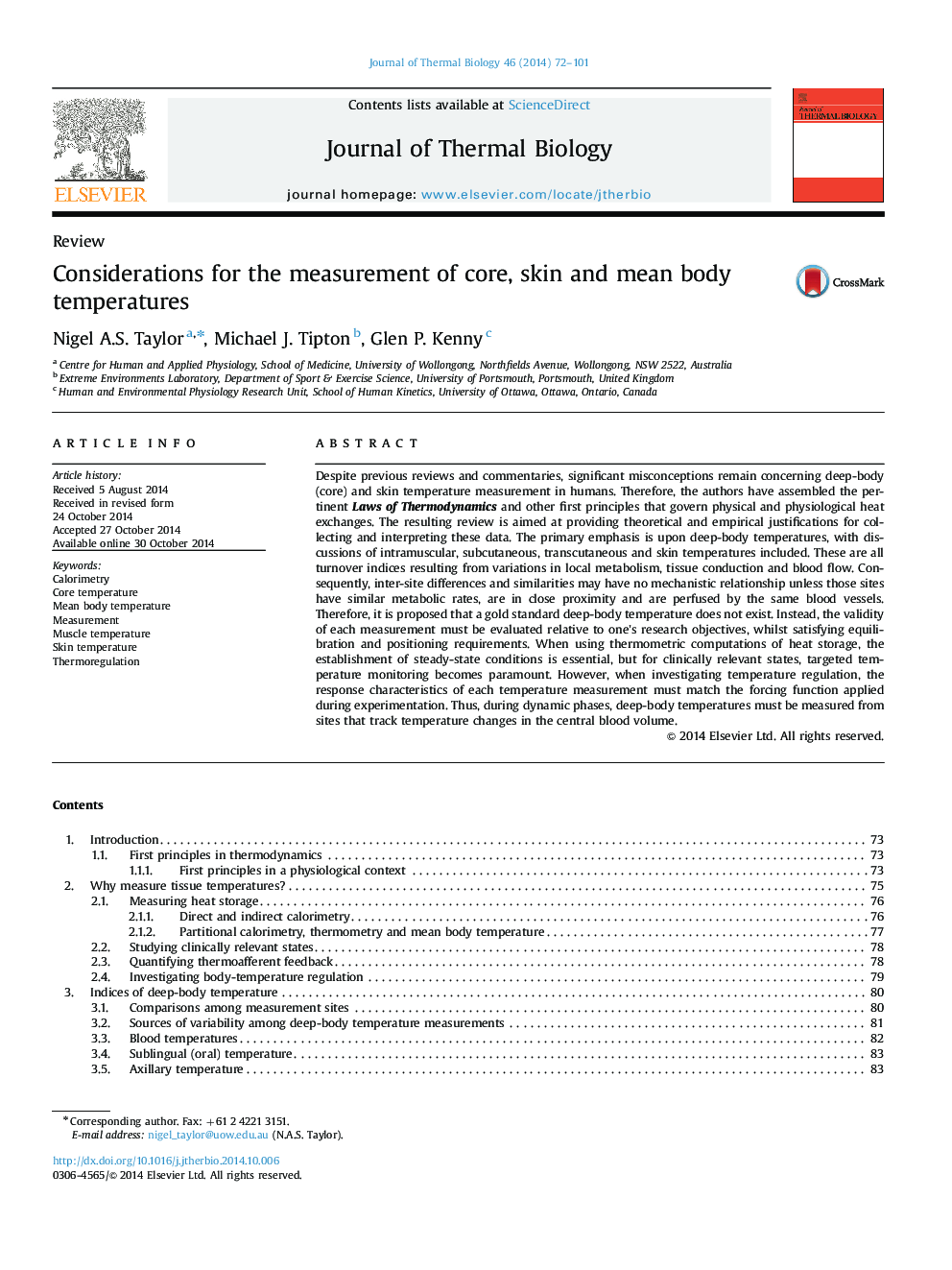| کد مقاله | کد نشریه | سال انتشار | مقاله انگلیسی | نسخه تمام متن |
|---|---|---|---|---|
| 2842858 | 1571099 | 2014 | 30 صفحه PDF | دانلود رایگان |
• Thermodynamic principles govern physical and biological heat exchanges.
• Inter-site tissue temperatures may be unrelated unless perfused by the same blood vessel.
• Measurement validity must be evaluated relative to one's research objectives.
• Measurement sensitivity must match the forcing function that disturbs homoeostasis.
• During dynamic phases, measurements should track central blood temperature.
Despite previous reviews and commentaries, significant misconceptions remain concerning deep-body (core) and skin temperature measurement in humans. Therefore, the authors have assembled the pertinent Laws of Thermodynamics and other first principles that govern physical and physiological heat exchanges. The resulting review is aimed at providing theoretical and empirical justifications for collecting and interpreting these data. The primary emphasis is upon deep-body temperatures, with discussions of intramuscular, subcutaneous, transcutaneous and skin temperatures included. These are all turnover indices resulting from variations in local metabolism, tissue conduction and blood flow. Consequently, inter-site differences and similarities may have no mechanistic relationship unless those sites have similar metabolic rates, are in close proximity and are perfused by the same blood vessels. Therefore, it is proposed that a gold standard deep-body temperature does not exist. Instead, the validity of each measurement must be evaluated relative to one's research objectives, whilst satisfying equilibration and positioning requirements. When using thermometric computations of heat storage, the establishment of steady-state conditions is essential, but for clinically relevant states, targeted temperature monitoring becomes paramount. However, when investigating temperature regulation, the response characteristics of each temperature measurement must match the forcing function applied during experimentation. Thus, during dynamic phases, deep-body temperatures must be measured from sites that track temperature changes in the central blood volume.
Journal: Journal of Thermal Biology - Volume 46, December 2014, Pages 72–101
